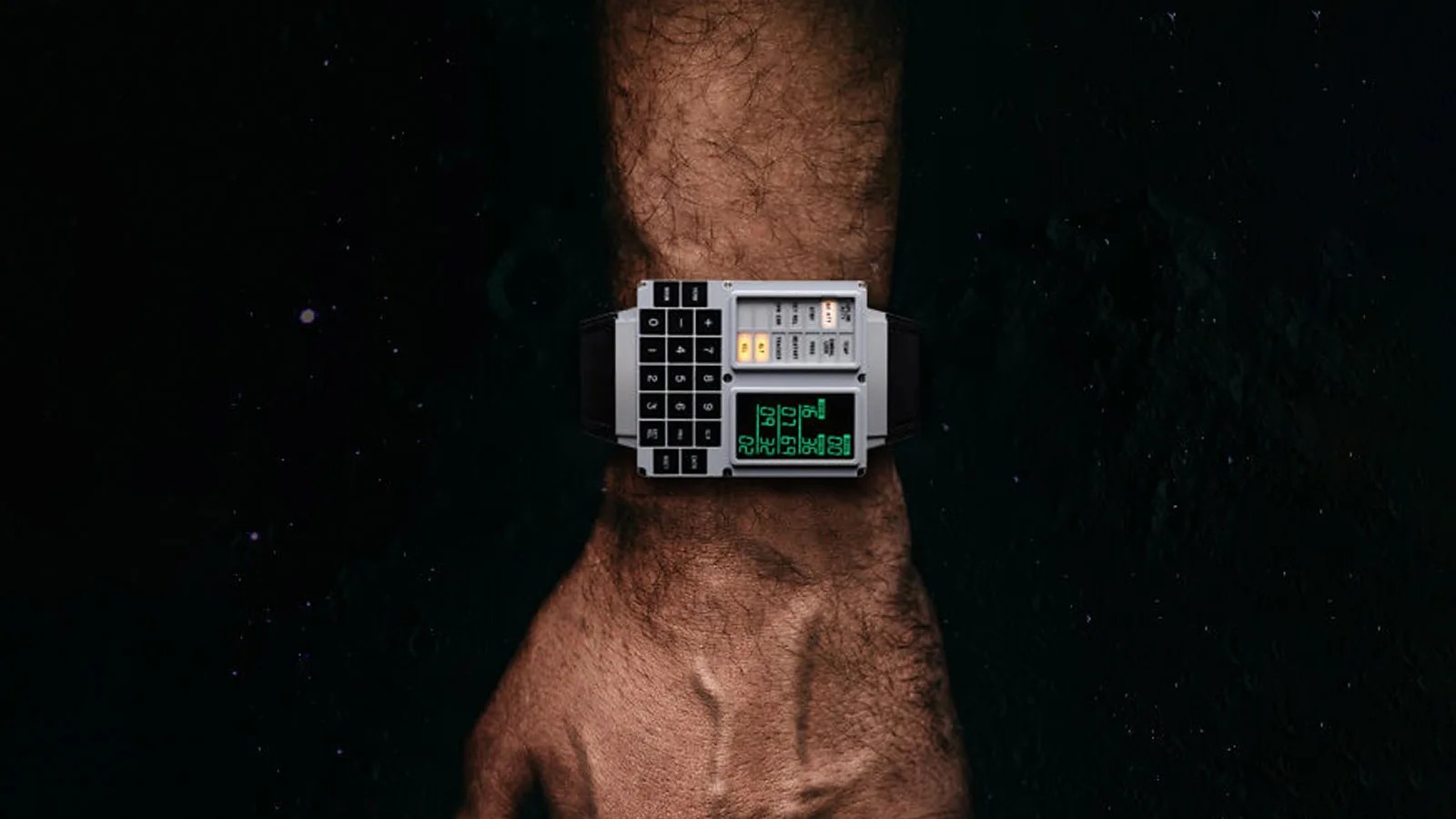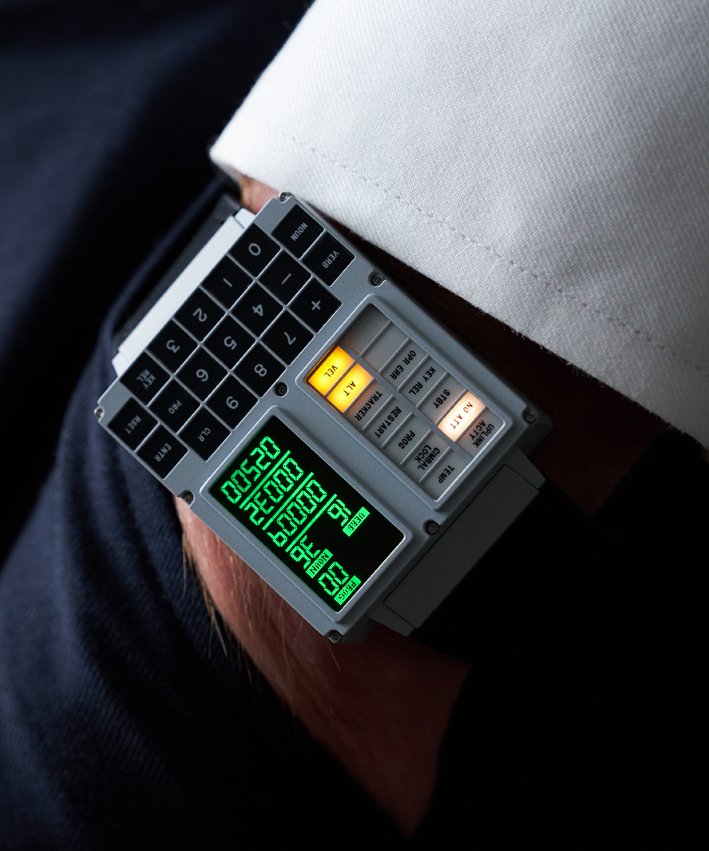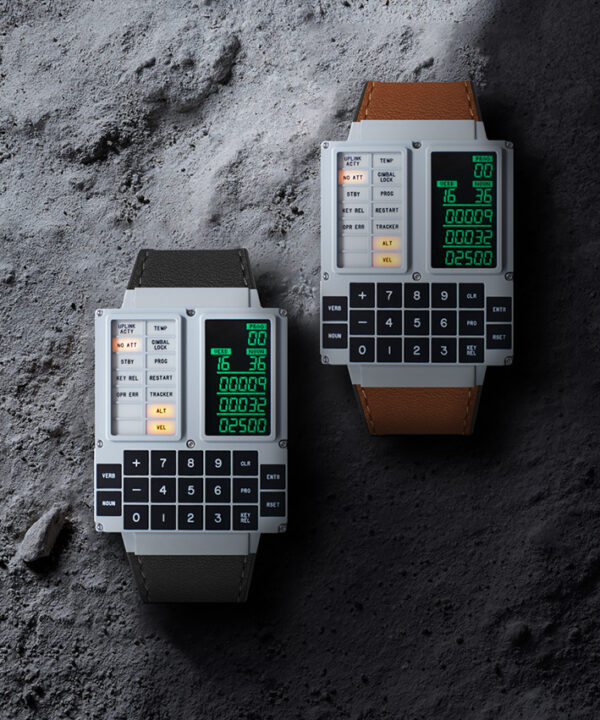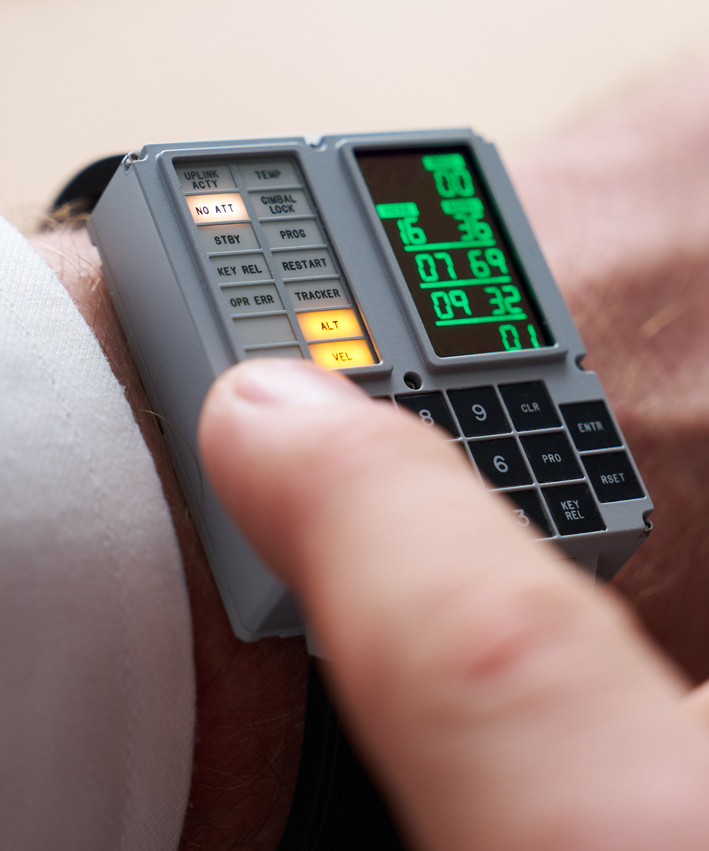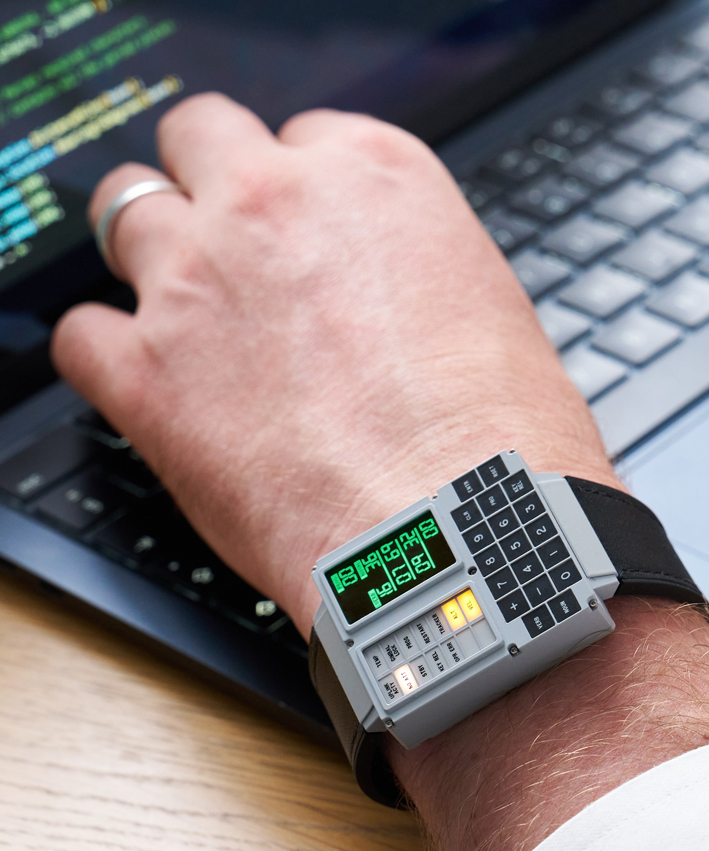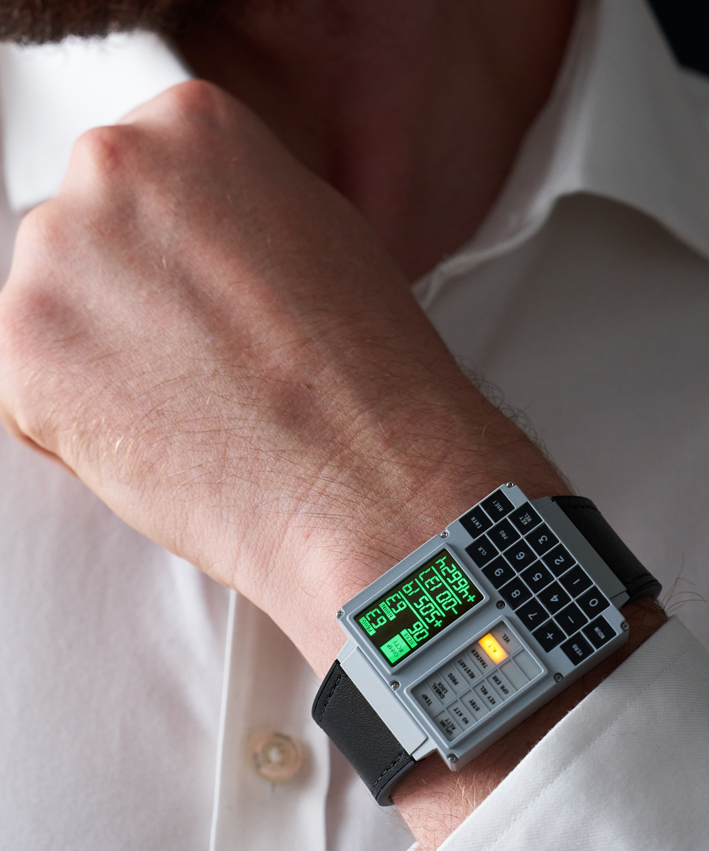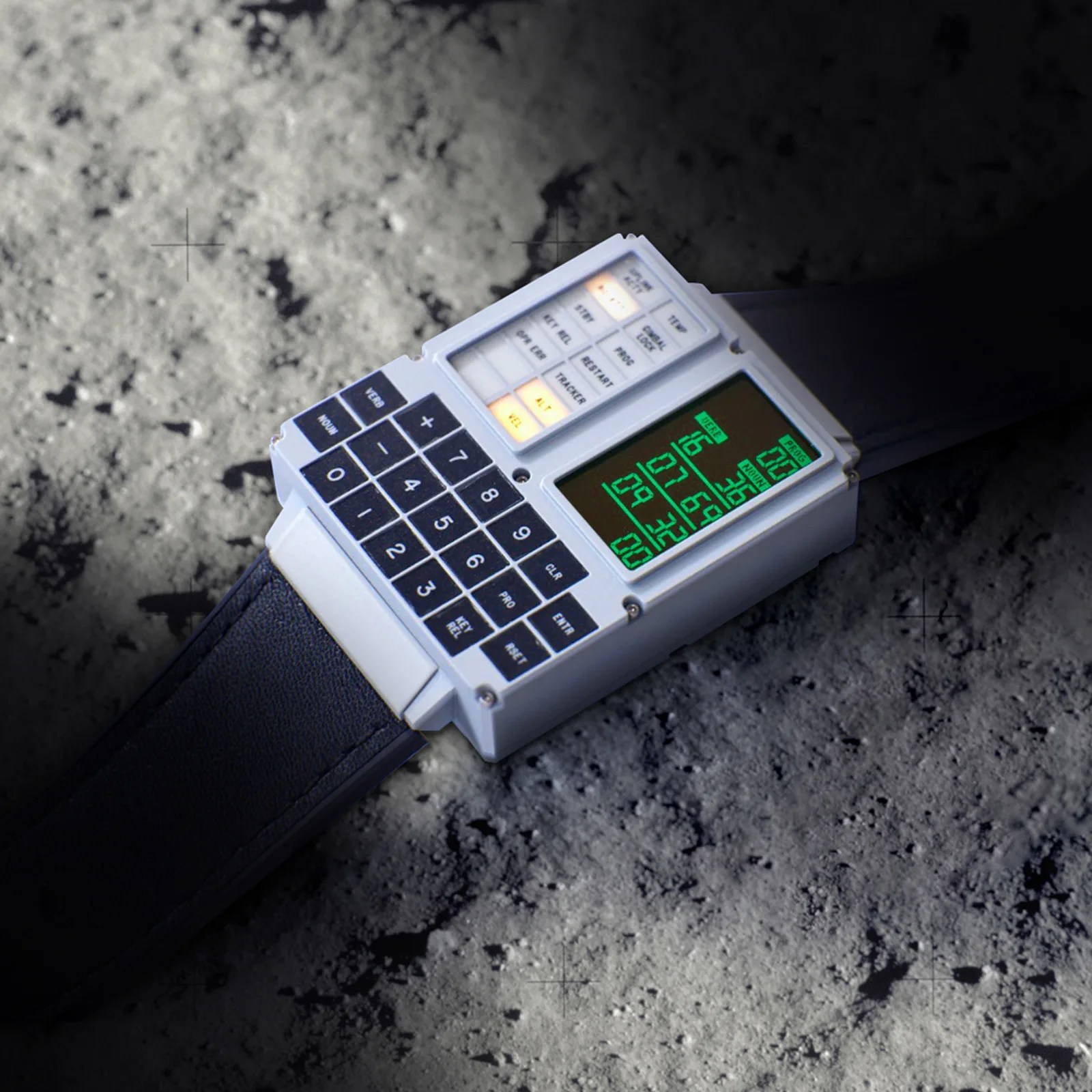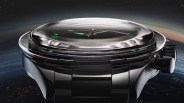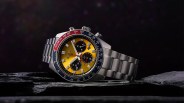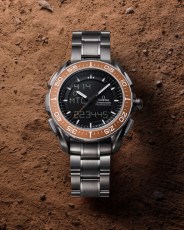Few things add sex appeal to a watch, like a tie-in with space travel, at least to a specific subset of consumers (including yours truly).
For that reason, it’s a watch genre that’s more crowded than many realize. From the iconic Omega Speedmaster to its affordable MoonSwatch cousin, to lesser known b-sides like the Bulova Lunar Pilot and Accutron Astronaut, or even important watches like the Breitling Navitimer that many forget also made it to space, or IWC’s new Polaris Dawn watch made for the new era of commercial space flight, there’s a surprisingly wide array of space watch options for anyone who wants one.
But the recently revealed DSKY Moonwatch made by the timekeeping newcomer Apollo Instruments is far from more of the same.
In fact, its design completely turns the entire concept of a space watch on its head.
A Moonwatch That Honors Aerospace Engineers
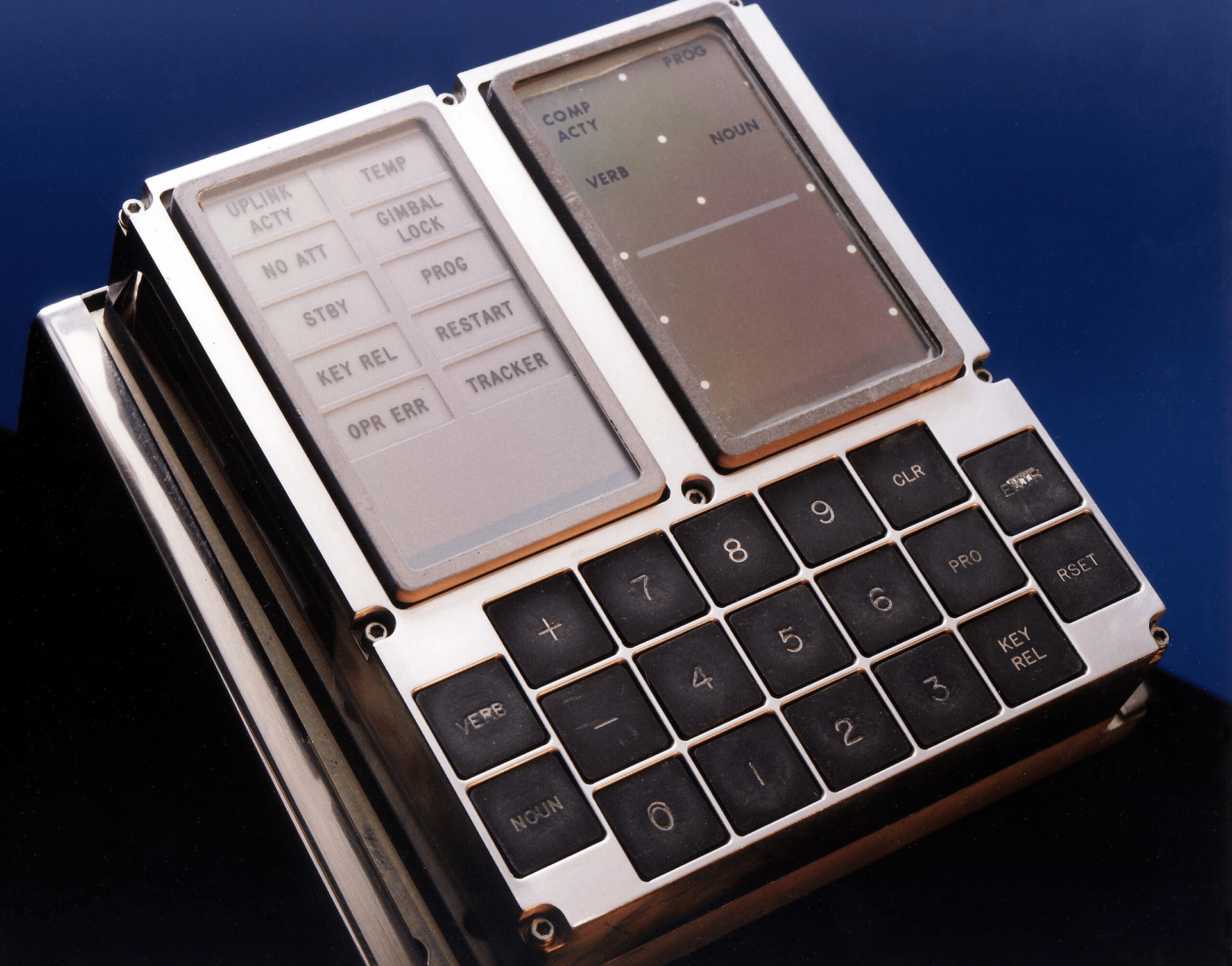
While the rest of the genre tends to celebrate the brave and pioneering astronauts and test pilots associated with various space missions or testing prep, the Apollo Instruments DSKY Moonwatch is, first and foremost, a love letter to aerospace and computer engineering.
